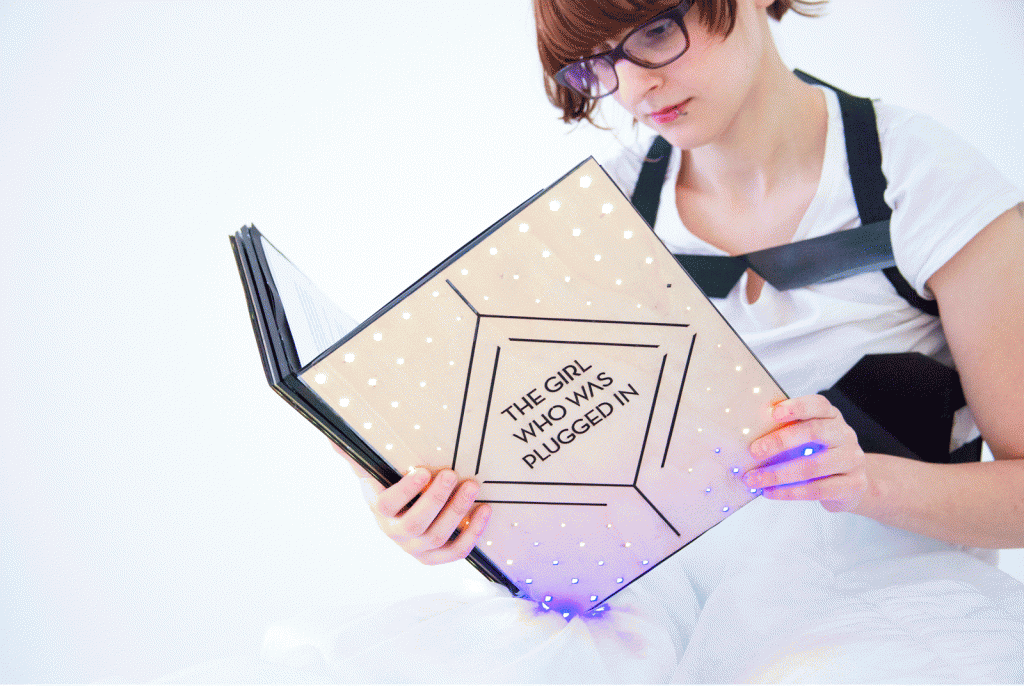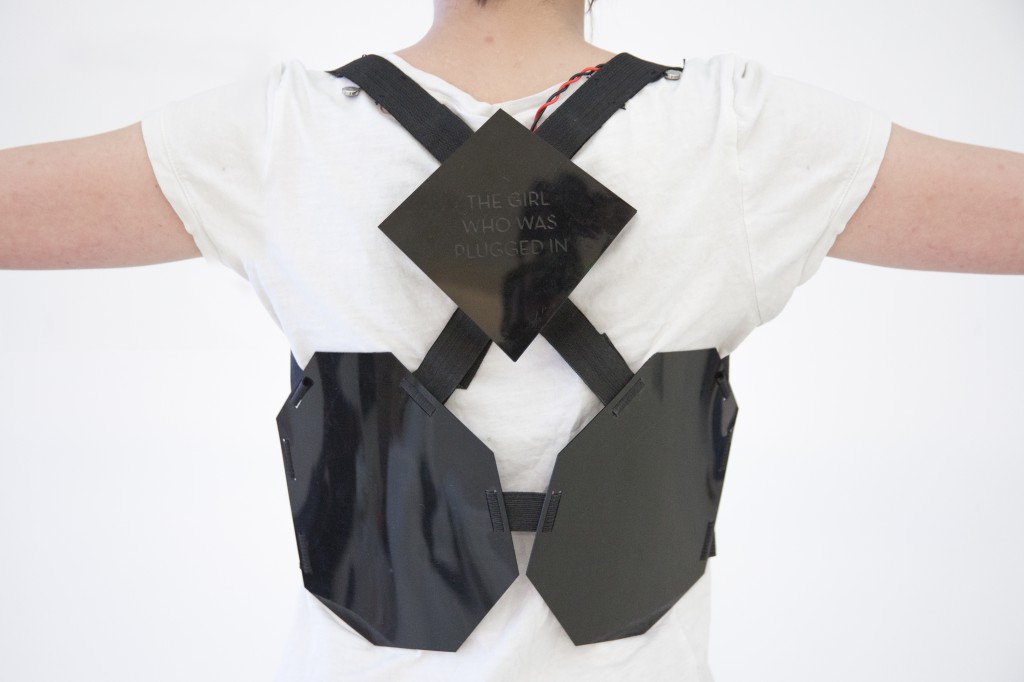Sensory fiction is about new ways of experiencing and creating stories.
Traditionally, fiction creates and induces emotions and empathy through words and images. By using a combination of networked sensors and actuators, the Sensory Fiction author is provided with new means of conveying plot, mood, and emotion while still allowing space for the reader’s imagination. These tools can be wielded to create an immersive storytelling experience tailored to the reader.
To explore this idea, we created a connected book and wearable. The ‘augmented’ book portrays the scenery and sets the mood, and the wearable allows the reader to experience the protagonist’s physiological emotions.
The book cover animates to reflect the book’s changing atmosphere, while certain passages trigger vibration patterns.
Changes in the protagonist’s emotional or physical state triggers discrete feedback in the wearable, whether by changing the heartbeat rate, creating constriction through air pressure bags, or causing localized temperature fluctuations.
Our prototype story, ‘The Girl Who Was Plugged In’ by James Tiptree showcases an incredible range of settings and emotions. The main protagonist experiences both deep love and ultimate despair, the freedom of Barcelona sunshine and the captivity of a dark damp cellar.
The book and wearable support the following outputs:
- Light (the book cover has 150 programmable LEDs to create ambient light based on changing setting and mood)
- Sound
- Personal heating device to change skin temperature (through a Peltier junction secured at the collarbone)
- Vibration to influence heart rate
- Compression system (to convey tightness or loosening through pressurized airbags)
View more photos of Sensory Fiction on Flickr.
– Felix Heibeck, Alexis Hope, Julie Legault


